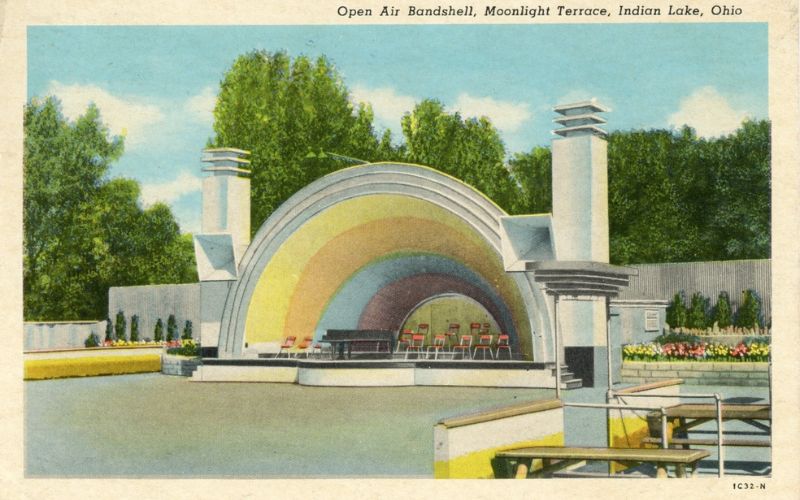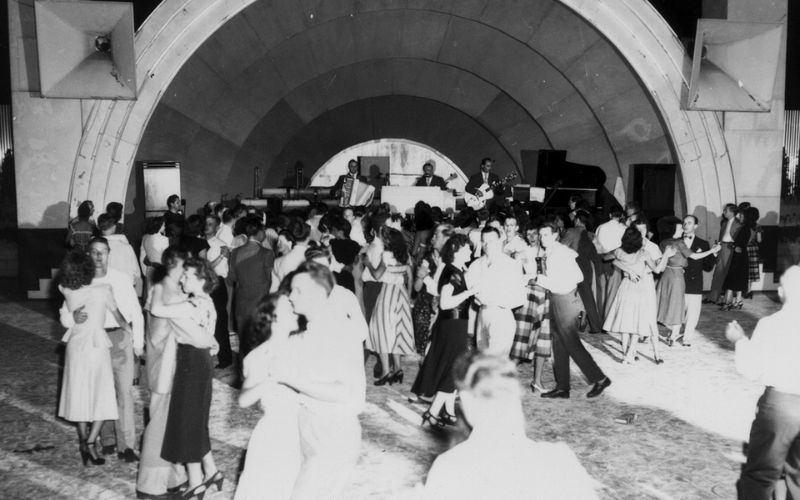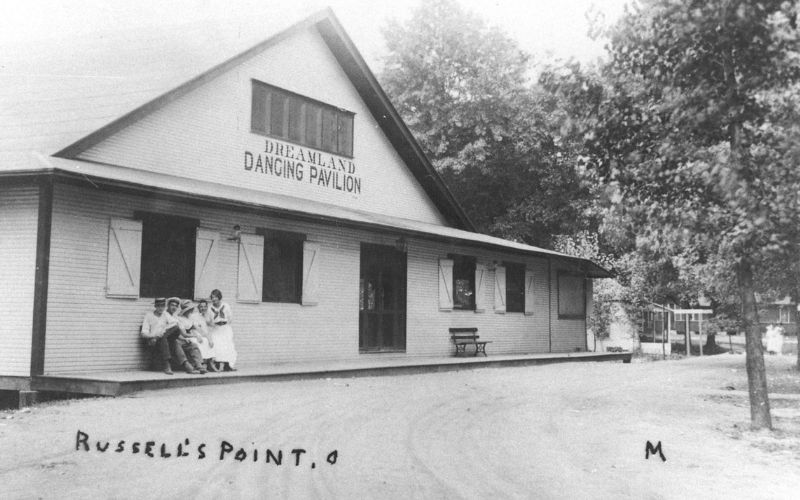By: Mary E. Mortimer
Music, dancing, and entertainment has attracted thousands of people to the Indian Lake area for many years.
You could dance at the large dance halls or small clubs most nights of the week.
The large dance halls hosted some of the top performers from the Big Band era, and the smaller clubs featured dancing and a variety of entertainment.
You could buy ten dance tickets for $1.00.
The Dreamland Dancing Pavilion at Russells Point and the Lakeview Dancing Pavilion were two of the first to open on Decoration Day, May 30, 1912.
Dreamland General Manager Thomas E. Thorpe advertised, “Dancing in the afternoon from 1:00 – 6:00 pm and 7:00 – 11:00 pm in the evening”.
The Lakeview Dancing Pavilion advertised “Dancing at Lakeview every night.”
In 1923, Thorpe announced he was enlarging the Dreamland Dancing Pavilion by twenty feet to meet the demand for more dance space.
Roller skating was also becoming quite popular.
The next year, he converted Dreamland dance hall into a roller-skating rink.
That same year, Samuel L. “Pappy” Wilgus and his son, French, who had been managers of the Sandy Beach bathing resort since 1909, conceived the idea of an amusement park.
With the growing number of visitors to Indian Lake, they knew an amusement park would be well received.
Along with all the Sandy Beach amusement park rides and attractions that were being constructed, the Minnewawa Dance Hall was built by Elmer Katzmeyer, a Russells Point builder, at a cost of approximately $50,000.
According to French Wilgus, general manager of the amusement park, twenty cars of lumber were used to build the new dancing facility.
Wilgus also stated he had used more than thirty-five carloads of lumber for the new amusement park.
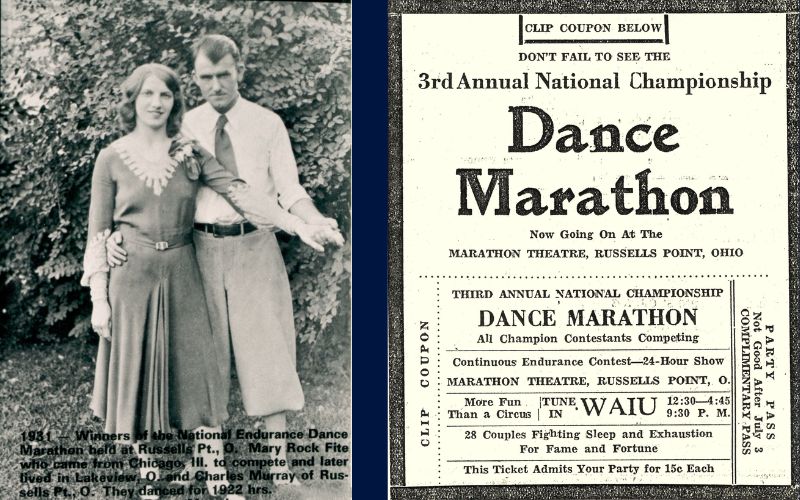
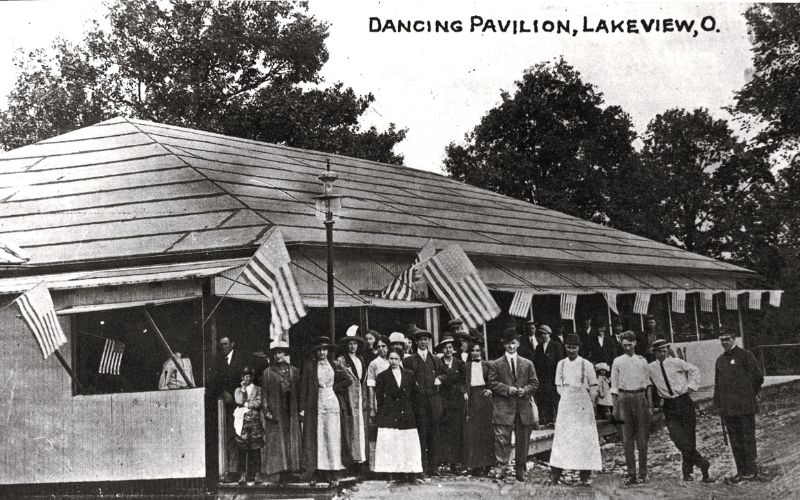
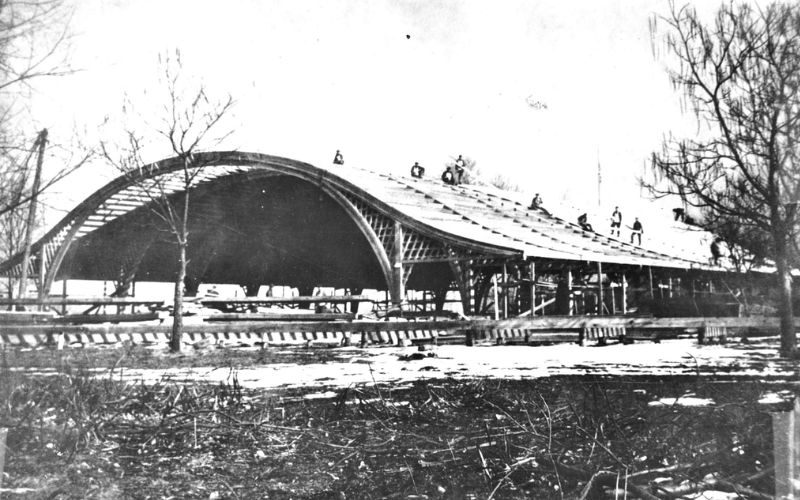
The Sandy Beach Amusement Park opened on Decoration Day, 1924.
At that time, the Minnewawa Dance Hall was the largest in the state and the fifth largest in the United States.
Two thousand couples, or four thousand people, could easily dance in comfort.
The dance hall had two bandstands in the mammoth room that provided non-stop music from 8:00 pm to 12:00 am.
It was also one of the first ballrooms to have mirrored balls, which would send colored lights streaming over the hall during the dancing.
The end bandstand had a lighted sign that indicated what the next dance number would be.
So, if the sign read “Waltz,” only those who danced the waltz participated.
The dance halls had strict rules.
Girls were not permitted to roll their stockings below their knees, and children under 18 years of age were not permitted to dance unless they were chaperoned by their parents or a guardian.
Gentlemen had to wear a coat and tie, and no liquor was allowed.
As the “Roaring Twenties” ended and the Great Depression of the 1930s began, “Ohio’s Million Dollar Playground” continued to be a major attraction.
Despite hard times, people still crowded the amusement park, and dance marathons became popular at the Marathon Theatre at Russells Point.
The winners of the first dance marathon in September 1930 were Betty Putterbaugh of Ft. Wayne, Indiana, and her dance partner, Elwell McDowell of Minnesota.
They danced for 1,688 hours and split the $1,000 first prize.
The next year, Charles Murray of Russells Point and Mary Rock Fite of Chicago, Illinois danced a record 1,922 hours.
In the final hours, the dancers had to place their hands on each other’s shoulders and did not dare to move them.
Murray wore suspenders, which enabled his partner to grasp them to keep her hands in the same position with less effort.
First prize was $600, second $300, third $175, and fourth $75.
Miss Rock was a professional marathoner and world champion, having won nine out of sixteen marathons she entered.
The Little Dutch Gardens, later known as the Old Vienna Gardens night club, opened in May 1934.
They also hosted children’s dancing contests.
That year, four-year-old Mary Catherine Shields won $2.50 with a tap-dancing performance.
She was a student at the Kathryn Searcy School of Dancing.
A disastrous fire destroyed the Minnewawa Dance Hall in 1935.
The following year, the open-air Moonlight Terrace Gardens was built on the same site overlooking the lake.
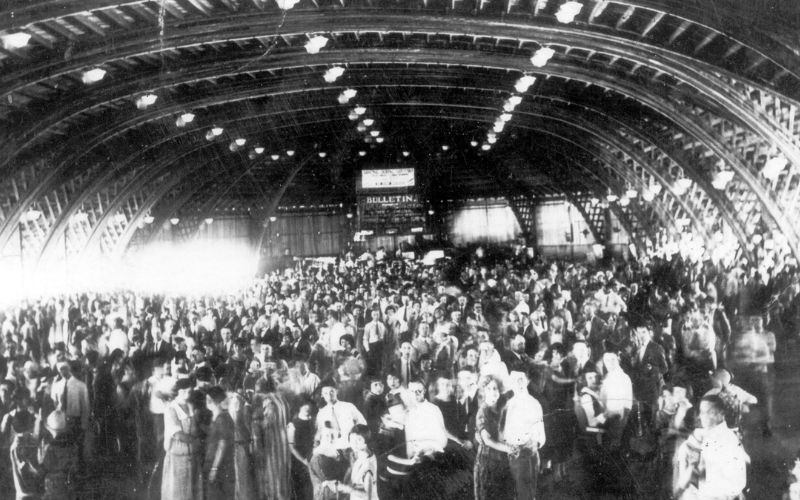

In 1937, a skating rink was added to the western end of the dance area that could be used by dancers in the event of inclement weather.
In 1940, after the dance marathon craze passed, the Marathon Theatre was moved, remodeled, and renamed Danceland.
The 18,000 square foot dance hall was located near the Plaza Hotel and the Old Vienna Gardens.
It became a very popular dance hall where top musicians played.
In the early 1950s, Danceland was renamed The Stardust Ballroom. It featured performers such as Guy Lombardo, Stan Kenton, and Larry Fotine and his orchestra.
When George Quatman took over management in 1957, he renamed the Stardust Ballroom the San Juan Ballroom.
After Quatman passed away in September 1964, the dance hall returned to the Stardust Ballroom name.
On opening day in 1965, The Rivieras performed; they had achieved fame for their recordings “Rockin Robin” and “California Sun”.
In May 1974, The Raspberries performed their hits “Go All the Way” and “Let’s Pretend”.
Other music greats that played at Indian Lake included: Benny Goodman, Tommy & Jimmy Dorsey, Glen Miller, Tex Beneke, Ozzie Nelson, Artic Shaw, Kay Kyser, Rudy Vallee, Cab Calloway, Roscoe Ails, Benny Resh, Les Brown, Art Mooney, and Paul Whiteman.
The dance halls were one of the biggest attractions at the amusement park.
For a small admission fee, couples could dance the night away or listen to the musicians and singers they had heard on the radio or seen in the movies.
Many wonderful memories, friendships, and relationships were made at the Indian Lake dance halls.
